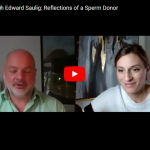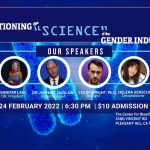Awareness of one’s own aging and the ability to reflect upon one’s own death may be uniquely human. Hair loss, diminishment in bone and muscle mass, osteoporosis, increasing susceptibility to cancer, Alzheimer’s, diabetes, Parkinson’s and a host of other age-related maladies speak uneasily of the coming of one’s own death. However, recent advancements in the relatively young field of biogerontology-the study of the biology involved in the human aging process-have offered promising insights into the prolongation of healthy life, leaving some scientists optimistic that human aging may soon become the latest process to succumb to our technological mastery over nature. Techniques like selective breeding, caloric restriction-a significant reduction in nutritional intake- and genetic manipulation, have already demonstrated that the life spans of mammals and multicellular organisms can be significantly extended. For instance, a nematode worm lifespan has been increased seven-fold by altering a single gene known as daf-21. American biologist Andrezej Bartke has extended the life span of a laboratory mouse by 70 percent with a combination of genetic alteration and caloric restriction2. What is especially significant is that these extensions in longevity have been accompanied by an extended period of health and vitality, assuaging fears of prolonged senescence and physiological decline so vividly described in Greek myth of Tithonus, who was granted eternal life by not eternal youth, and in the Struldbruggs of Jonathan Swift’s Gulliver’s Travels.
While scientists and ethicists are already discussing the implications and problems posed by slowing aging via genetic manipulation, adequate theological responses have been largely lacking. One such heuristic device employed to help distinguish the morally permissible from the morally inadvisable is the distinction between therapy and enhancement. Problems come however when we try to determine what makes something therapeutic and what makes something enhancement. Typically, the use of technology to overcome those phenomena which impair normal human functioning-like many diseases-are considered therapeutic technologies, while those techniques which are aimed at improving what is deemed normal human function are understood as enhancement3. But this distinction depends almost exclusively on what normal means, which creates some problems when we try to apply this distinction to the human phenomenon of aging. Though the vast majority of scientists, researchers, and clinicians will assert that aging is a normal process-and therefore not a disease, some are arguing that the retardation of human aging is warranted for its therapeutic benefits. That is, some scientists are advocating slowing the human aging process via genetic manipulation in hopes of reducing the period of morbidity and incidence of age-related diseases like Alzheimer’s and other age-related maladies (though such an outcome is far from guaranteed). Indeed, “not adding years to life, but life to years” is a common mantra of the gerontological establishment. Thus, we are faced with the possibility of genetic enhancement for therapeutic ends.
Thus, we have the possibility of slowing the human aging process primarily in an attempt to cure, or minimize diseases associated with aging, which may have the side effect of helping people live much longer. Incidentally, this scenario also makes a mockery of that otherwise very useful piece of Roman Catholic casuistry commonly known as ‘the law of double effect.’ While this ‘law’ has proved enormously helpful when discussing pain relief for the terminally ill, the usefulness of this law in situations where the unintended consequence is a longer life (as opposed to a hastened death) is highly questionable4. Thus, it seems that when it comes to manipulating aging, both the law of double effect and the therapy/enhancement distinction do little to help us here.
In returning to the therapy/enhancement distinction, it has been asserted that this distinction needs some underlying commonality by which to judge one from the other, which is usually tied directly to the normative status of human nature. However, even from a theological perspective where God is acknowledged as Creator, Crucified, and Redeemer, it is not clear how we decide what counts as therapy and what counts as enhancement within this particular Christian metanarrative. For example, one such proposal considers this therapy/enhancement distinction as defined by the Fall in Genesis, where ‘therapy’ is defined as treating that which has occurred as a result of the Fall5. At first glance this seems to be very helpful. Under such a conception, diseases come under the ‘therapy’ category, while other features like genetically changing one’s hair or eye color do not. But even when we consider aging and death within a Christian metanarrative, things get murky.
It seems that referring back to the Fall as a way of discerning between therapy and enhancement has problems of its own. If, for instance, one holds that physical death and aging are a result of the Fall, then it would appear that a genetic battle against aging and death could be justified, and therefore qualify as ‘therapy.’ Indeed, much of the history of Western Christianity from Augustine onward has held that death-both physical and spiritual-was a result of the Fall. However, more recent shifts in theological thinking, not immune to the profound influence of evolutionary theory where both aging and death are an integral part of how we humans have come to be, have resulted in a rejection of the idea that physical death was introduced into the world by Adam’s sin. While Augustine’s description of life in Paradise before the Fall has been routinely attacked by both theologians and scientists for its fanciful notions of an immortal Adam and Eve who had it in their power to live forever, it is worth observing that even Augustine spoke of aging and its remedy in the garden before the Fall. Augustine says of Adam, “food was present, lest he hunger; drink, lest he thirst; and the tree of life, lest age decay him.”6 Augustine’s statement here would find more favor with those who see aging as a universal phenomenon, apart from any such metaphysical explanations, rather than a condition imposed on humanity on account of Adam’s sin. Thus, referring to the Fall as a means of distinguishing between therapy and enhancement with respect to aging is not particularly helpful.
As mentioned earlier, most in the scientific and medical communities argue against labeling aging as a disease, though the two are not unrelated. But this ought to be more than an exercise in nomenclature. The important underlying question-a theological question as much as it is a scientific one-is whether we should treat aging as a problem for our technological expertise. The question has already been posed by several in the scientific community: “How far into the problematic business of engineering better humans should we go with our efforts to unravel and control the fundamental processes of aging?”7 The title of the article from which this quote is taken is every bit as informative as the question-“Biogerontology, ‘Anti-aging Medicine,’ and the Challenges of Human Enhancement.” The scientific community already acknowledges this endeavor as enhancement, even as many Christian ethicists would agree. Enhancement from a scientific perspective however carries less moral force than many Christian ethicists would wish to lend it. This suggests that any adequate theological response to anti-aging technology will have to move beyond the therapy/enhancement distinction, taking fuller account of a worldview which acknowledges not only the creation and the fall, but redemption and the new creation. This will however, likely add more questions, which is not necessarily a bad thing. At the very least, it may afford us opportunities of asking the more profound questions conce
rning human existence and how life is to be lived before God in the community of faith, questions that have tended to be suppressed by the therapy/enhancement distinction.
1L. Partridge and D. Gems, “Mechanisms of Ageing: Public or Private?” Nature Reviews Genetics 3 (2002): 165-175. The lifespan was increased from 31 days to just under 200 days.
2A. Bartke et al., “Extending the Lifespan of Long-lived Mice,” Nature 414 (2001): 412.
3Of course, it is not quite this simple either. The types of technologies uses also matters.
4That is, if one’s primary intent in administering pain-relief is to ease the suffering of the individual-even though such pain relief will likely hasten death-then one should not be held guilty for this unintended effect.
5Again, this is not to say that questions of which type of genetic therapy could be employed are unimportant, or would factor into the decision.
6Augustine, The City of God Against the Pagans, Bk. XIV, CH. 26, trans. R. W. Dyson (Cambridge, UK: Cambridge University Press, 1998), 628, emphasis mine.7Eric T. Juengst, et al., “Biogerontology, ‘Anti-aging Medicine,’ and the Challenges of Human Enhancement,” Hastings Center Report 33, no. 4 (July-August, 2003), 22.
Author Profile
Latest entries
 Sperm DonationMarch 15, 2022Venus Rising with Edward Saulig: Reflections of a Sperm Donor
Sperm DonationMarch 15, 2022Venus Rising with Edward Saulig: Reflections of a Sperm Donor BioethicsMarch 13, 2022Dr. C. Ben Mitchell: 2022 Ramsey Award Winner
BioethicsMarch 13, 2022Dr. C. Ben Mitchell: 2022 Ramsey Award Winner #BigFertilityMarch 10, 2022Documentary Explores One Woman’s Journey through Egg Donation
#BigFertilityMarch 10, 2022Documentary Explores One Woman’s Journey through Egg Donation BioethicsMarch 9, 2022Questioning the “Science” of the Gender Industry
BioethicsMarch 9, 2022Questioning the “Science” of the Gender Industry

